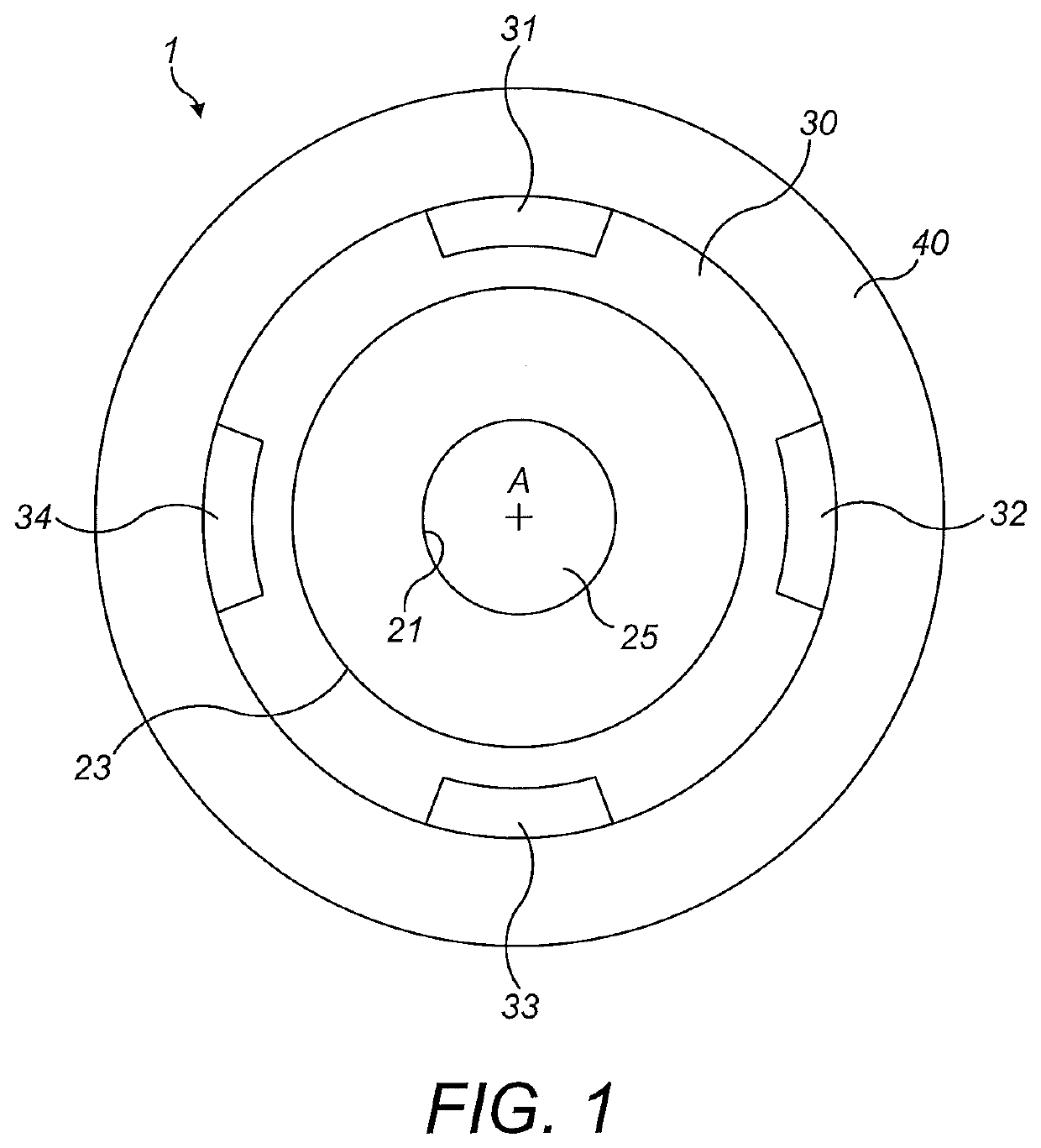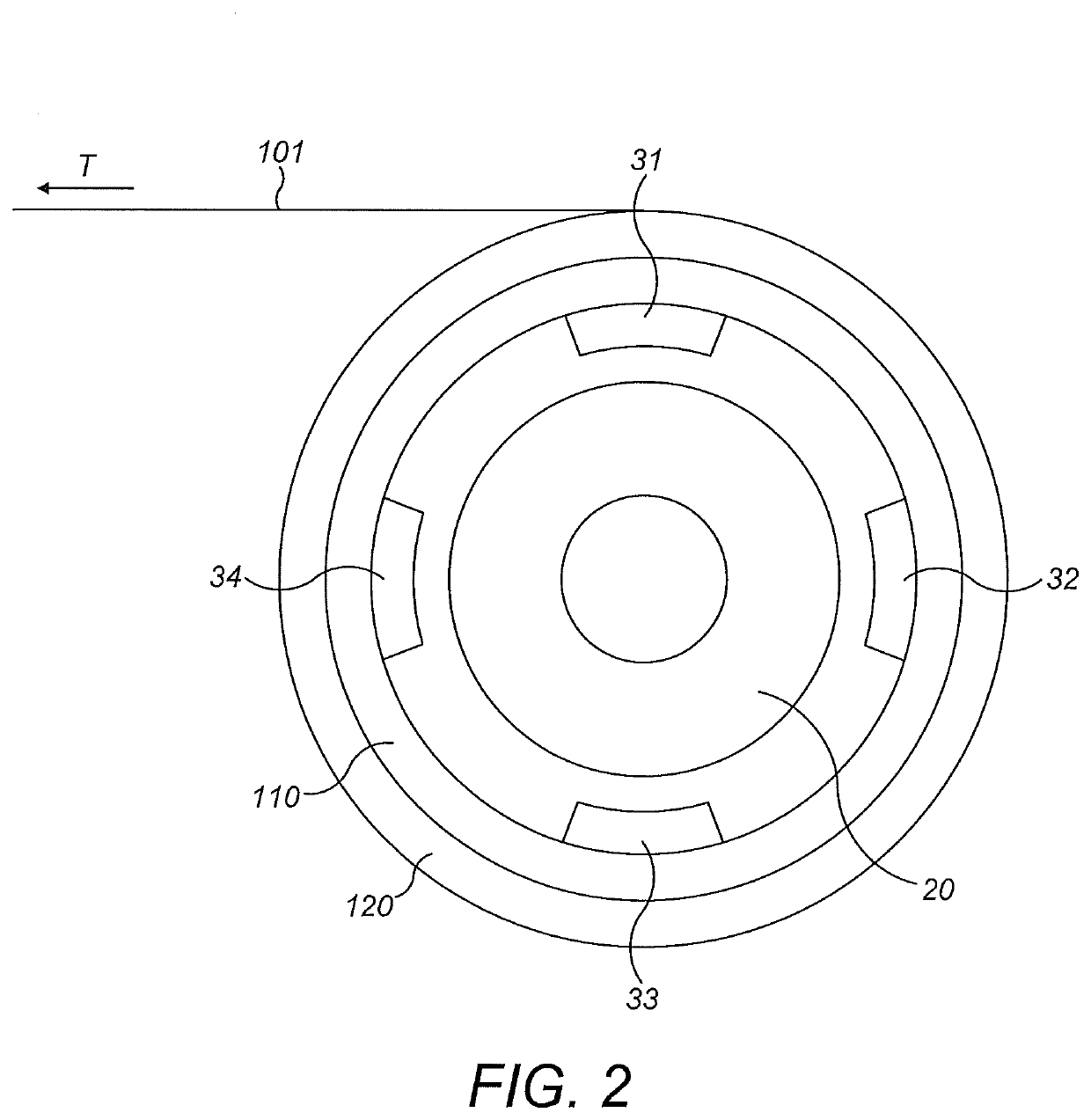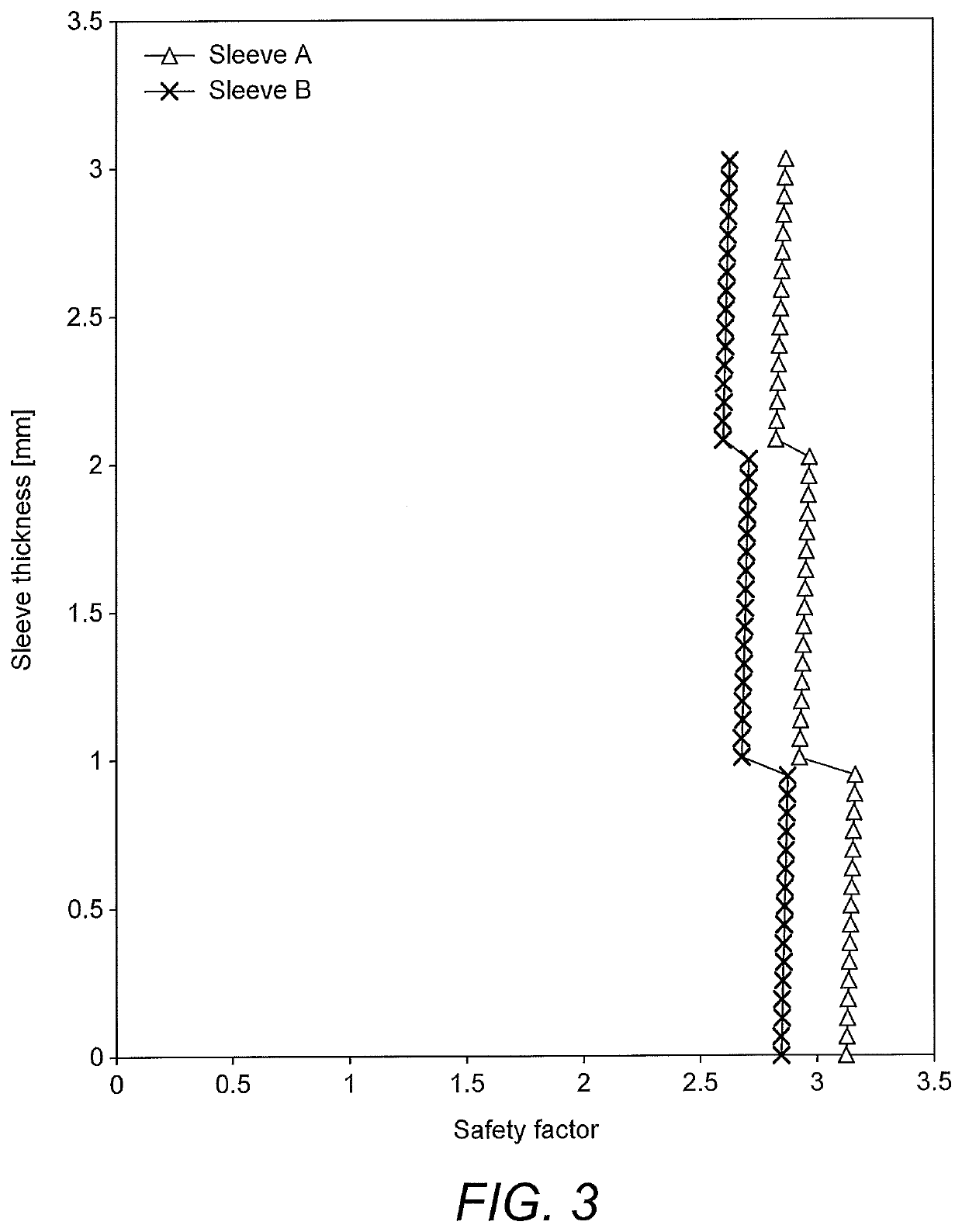Improved method for manufacturing a rotor
a manufacturing method and a technology for rotors, applied in the direction of manufacturing stators/rotor bodies, magnetic circuit rotating parts, magnetic circuit shapes/forms/construction, etc., can solve problems such as failure of generators, and achieve the effects of improving mechanical and material properties, simplifying the manufacturing method, and more even loading of sleeves
- Summary
- Abstract
- Description
- Claims
- Application Information
AI Technical Summary
Benefits of technology
Problems solved by technology
Method used
Image
Examples
Embodiment Construction
[0044]FIG. 1 shows a rotor 1 which has been being manufactured according to an embodiment of the present invention. The rotor 1 may have mechanical properties, materials properties and / or one or more visual indications which are indicative of having been made by this method. The rotor 1 may also have a composite fibre arrangement and / or microstructure indicative of having been made by this method.
[0045]The illustration provided in FIG. 1 does not highlight the differences between the present invention and known methods. These differences will be explained in detail in relation to FIG. 5.
[0046]As shown in FIG. 1, the rotor 1 comprises a rotor body 20, a magnet layer 30, and a sleeve 40.
[0047]The rotor body 20 is configured to support at least one magnet, which may be provided in a magnet layer 30 as shown in FIG. 1. The rotor body 20 is configured to translate a driving force from a driving means to rotate the magnet layer 30, so as to generate a moving magnetic field. The rotor body...
PUM
 Login to View More
Login to View More Abstract
Description
Claims
Application Information
 Login to View More
Login to View More - R&D
- Intellectual Property
- Life Sciences
- Materials
- Tech Scout
- Unparalleled Data Quality
- Higher Quality Content
- 60% Fewer Hallucinations
Browse by: Latest US Patents, China's latest patents, Technical Efficacy Thesaurus, Application Domain, Technology Topic, Popular Technical Reports.
© 2025 PatSnap. All rights reserved.Legal|Privacy policy|Modern Slavery Act Transparency Statement|Sitemap|About US| Contact US: help@patsnap.com



